#Nathan Handwerker
Photo
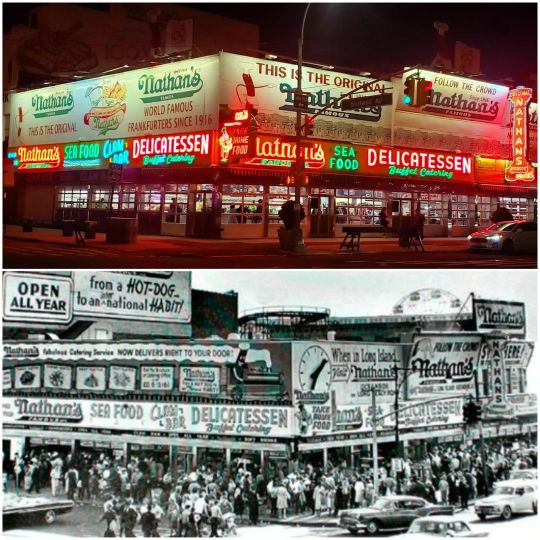
Today #UrbExNYC post comes from the County of Kings in the form of the iconic Coney Island landmark Nathan’s Famous, on the corner of Stillwell and Surf Avenues.
Polish immigrant Nathan Handwerker opened his first nickle hotdog stand in 1916 and the original stand has expanded to the location you see here. As of 2019, Nathan's had 213 locations worldwide.
#NathansFamous #NathanHandwerker #UrbanExploration #BrooklynHistory #NewYorkHistory #NYHistory #NYCHistory #CulinaryHistory #FoodHistory #History #Historia #Histoire #Geschichte #HistorySisco (at Nathan’s Famous)
https://www.instagram.com/p/CdytRZEu47w/?igshid=NGJjMDIxMWI=
#UrbExNYC#Nathan's Famous#Nathan's Hot Dogs#Nathan Handwerker#Urban Exploration#Brooklyn History#New York History#NY History#NYC history#Culinary History#Food History#History#Historia#Histoire#Geschichte#HistorySisco
4 notes
·
View notes
Text
Landesausstellung Kunsthandwerk 2022 - Staatspreis Gestaltung Kunst Handwerk: Schwäbisch Gmünd vom 25.09. bis 06.11.2022
Landesausstellung Kunsthandwerk 2022 – Staatspreis Gestaltung Kunst Handwerk: Schwäbisch Gmünd vom 25.09. bis 06.11.2022
Insgesamt 90 Exponate sind in Schwäbisch Gmünd in der Landesausstellung zu sehen. Machen Sie sich ein Bild und schenken den Arbeiten Ihre Zeit und Aufmerksamkeit. Jedes einzelne Werk hat seine Besonderheiten. Details zu Material und Entstehung sind jeweils über einen QR-Code abrufbar.
Empfehlenswert ist der Besuch von Führungen der ausstellenden Kunsthandwerker*innen.Das gesamte Programm finden…

View On WordPress
#angewandte Kunst#Annette Lechler#BdK bund der Kunsthandwerker Baden-Württemberg#Franziska Bernadette Wentz#Galerie im Prediger#Gestaltung#Handwerk#Hnadwerkskunst#Kunst#Kunsthandwerk#Labor im Chor#Landesausstellung Kunsthandwerk 2022#Lore Wild#Marianne Wurst#Mirjam Hiller#Philipp Friedrich#Schwäbisch Gmünd#Stefan Broszeit#Talente fördern#Thomas Nathan#Tobias Dingler#Ute Kathrin Beck
0 notes
Photo

Crowds gather outside the original Nathan's Famous hot dog stand on Coney Island, 1955. The stand was originally built in 1916 by Polish immigrant Nathan Handwerker with a $300 loan; today, the restaurant chain can be found all over the world.
Photo: Getty Images/Conde Nast Traveler
#New York#NYC#vintage New York#1950s#Nathan's Famous#hot dogs#Nathan's hot dogs#Coney Island#crowds#restaurant#restaurant chains
241 notes
·
View notes
Text
Burger Joints Of The World, Nathan's Famous

Another American chain tracing their history back over 100 years. Starting life as a nickel hot dog stand in Coney Island in 1916, the chain bears the name of it's co founder, Nathan Handwerker. Nathan started the business with his wife Ida. The hot dog recipe they used was her idea, with her grandmother creating the secret spice sauce.
Although they were Jewish, their produce lacked rabbinic supervision and the meat wasn't kosher, they advertised it as 'kosher style.'
Handwerker was an immigrant who arrived in New York and found work at Feltman's restaurant in Coney Island.
Going Into Business For Himself
One legend has it that Eddie Cantor and Jimmy Durante, the 'singing waiters' encouraged him to start his own restaurant. The official company history doesn't mention this, but it's a nice story. The couple spent their life savings of $300 to start the business.
When he launched he undercut his former employer who was charging 10c for a hot dog. Nathan's came in at 5c!
At the time, food regulation wasn't really a thing, and hot dogs were considered cheap fare. Handwerker had customers dressed in surgeons smocks eating at his place, presumably surgeons would only eat good food.
By Ajay Suresh from New York, NY, USA
Expansion
Nathan's son Murray drove the expansion of the chain. A second branch in New York was added in 1959 and a third in 1965. By 1968 the company had gone public.
The family sold the chain to a group of private investors in 1987, at which point the chain was franchised and expanded rapidly. They acquired Kenny Rogers Roasters and Miami Subs Grill.
By 2001 Nathan's Famous had 24 company owned units, 380 franchised units and 1400 stores in 17 foreign countries around the globe.
They signed a deal with major league baseball in 2017 to become the official hot dog sponsor.
The original store had remained open 365 days a year since its inception, until being forced to close due to hurricane Sandy, but six months later it was repaired and reopened.
One quirk is that the original store still served fried frogs legs which has been on the menu since the 1950's
Hot Dog Contest
On the 4th July Nathan's Famous hosts an annual hot dog eating contest. Starting in the 1970's the contest sees contestants trying to eat as many hot dogs as possible in 10 minutes. The current record holder is Joey Chestnut with 76 hot dogs and Miki Sudo with 48 and 1/2 for the ladies.
By Ajay Suresh from New York, NY, USA
Read the full article
0 notes
Text
La historia de Nathan Handwerker, fundador de Nathan's Famous: ¿Cómo creó una de las marcas de Hot Dogs más icónicas del mundo?
https://www.negociosyemprendimiento.org/2023/08/historia-nathan-handwerker-fundador-nathans-famous.html?utm_source=dlvr.it&utm_medium=tumblr
0 notes
Text
4th of July @ Nathan’s Famous hot dogs

On the Fourth of July, the eyes of the nation will fixate on a tiny peninsula in Brooklyn to watch just how much salt and meat trimmings the human digestive system can handle before it shuts down.
We’re talking, of course, about Nathan’s Famous International Hot Dog Eating Contest on Coney Island, a Fourth of July tradition that dates back to 1916.
That year, 24-year-old Jewish immigrant Nathan Handwerker stopped slicing bread at a restaurant to invent the next best thing: a hot dog stand at the corner of Stillwell and Surf Avenues that served up fast, cheap, and savory finger food.
Fast forward to today, and Nathan’s Famous is a publicly traded corporation with franchises all over the world. Not only is the original shop in Coney Island still standing, but it’s a lot bigger and sells a variety of delights (cheeseburgers, lobster rolls, frog’s legs) you can bring with you on a stroll along the boardwalk.
Meanwhile, the hot dog contest held at Nathan’s has ballooned into a full-blown television event: ESPN has owned the broadcasting rights for the past 20 years.
You can even place wagers on it, though don’t expect to make much money if you bet on Joey Chestnut or Miki Sudo to win. These two gastronomically talented athletes dominate the men’s and women’s divisions, and last year Chestnut won by 15 dogs while (expertly) subduing a protester who rushed the stage during the event.—NF
0 notes
Text
1955
Nathan's Famous (est. 1916) at Coney Island was founded by Polish immigrant Nathan Handwerker (1892–1974) with a $300 loan. He landed on Ellis Island in 1912.
He first worked as a roll slicer for Feltman's (1871-1954), selling Coney Island Red Hots. The term hot dog was banned then by Coney Island's Chamber of Commerce for connoting dog meat.
Eddie Cantor and Jimmy Durante convinced Nathan to leave Feltman's, and start his own stand, which sold hot dogs for 50% less at a nickel each.
Nathan's wife Ida was behind the hot dog ingredients, using her grandmother's secret spice recipe.
Servers in 1916 wore surgeon smocks to project an image of cleanliness. Nathan's promoted samples to doctors and nurses.
The meat packing industry had been scandalized by Upton Sinclair's The Jungle (1906) for corruption and lack of hygiene.
The hamburger did not make a comeback until world's first fast-food chain White Castle (1921), projecting whiteness (walls, uniforms, buildings) for cleanliness.
By 1920, 75,000 hot dogs were sold on weekends at Nathan's. Police regularly gave double-parked cars a break. Customers have included FDR, Stalin and Churchill.
From 1950s-2010s, Nathan's sold a popular Chow Mein Sandwich, originally from 1930s-40s Fall River (MA), popular with French-Canadians and Europeans, nostalgic for 1959-born local Emeril Lagasse.
RFK campaigned at Nathan's in 1964. In 1968, Nathan's expanded, eventually with 300 restaurants across the US, supplying supermarkets in 50 states. Nathan's would eventually expand to 17 nations worldwide.
Originally Nathan's became the official food vendor for Woodstock (1969) for 400,000 music fans, but bowed out when the festival location moved from Woodstock.
Nathan's hot dog eating contest became an annual event from 1972, watched by 2 million people in 2011 on ESPN.
Takeru Kobayashi won 2001-06 titles, and set 8 world records eating hot dogs, meatballs, Twinkies, tacos, hamburgers, pizza, ice cream and pasta.
On July 4, 2001, Kobayashi ate 50 hot dogs in 12 min. He reached 69 by 2011.
There was a legendary story of the first hot dog eating contest at Nathan's taking place on July 4, 1916, to determine which of 4 men was most patriotic. James Mullen won, eating 13 hot dogs in 12 mins. But the story was fictional.
Nathan's share price peaked at $41 in the 1970s, but dwindled to $1 during the 1981 recession, nearly collapsing.
There were loud calls to diversify, but Nathan's son Murray Handwerker stayed true to the hot dog. By 1986, Nathan's sold 20 stores and a packaged products business for $19 million.
Nathan's at Coney Island closed for the first time in 2012 after Hurricane Sandy and reopened again, teeming with business.
Photo by George Heyer

0 notes
Text
Ohne Worte
Was die Tests und Provokationen auch auf dem Cyberfeld betrifft! Der Permalink in diesem Fall lautet https://twitter.com/prezydentpl/status/1526087580516859909 - Cyberfeld KI. "Nee"? Das aversive Geschnatter soeben beim Update des Textes mit Permalink? Och! Gut. Weitere .. Mit Befehlsketten. Sie hatten wen genau sehr symbolisch beispielsweise mit einer Atemlähmung beglücken wollen? Ein weiteres Update gegen 13 : 29 Uhr. Das Haustechnikprotokoll. Szenenanalyse Nathan der Weise. Szenario auch da draussen mit Datenbank 3! Gesperrt für Gefährder zum Test. Erhöhte Puls-Frequenz. Haustechnikprotokoll. Weitere GPS-Daten.
Und weiter im alten Text. Beschuss Nacken wiederholt als sehr symbolische Provokation? Wollten Sie im Lager foltern? "Ernst-Haft"? Was genau symbolisch sanktionieren? Folterspielchen auch zum Auffinden von Kollegen? Auf körperliche und seelische Schwach-Stellen aufsetzen? Sie haben Ihr Handwerk wo genau gelernt? Ihnen ist das Zimbardo-Experiment bekannt? Doch. Das ist das Niveau! Weitere. Muss ich mehr zum unten verlinkten Video sagen? Häuser-Kampf ist richtig! Ich denke, das muss nicht weiter erklärt werden. Der Kontext der Ethnischen Säuberung auch mit Hilfe von Gebäudetechnik ebenfalls angedeutet! Update: Bei weiterer und stark erhöhter Puls-Frequenz im militärtechnischen Protokoll wird die Quelle neutralisiert! Fernlenkung. Dea Syria. Zielkoordinaten. Insider!
Weiter im alten Text. Sie versuchen was genau zu verhindern? Die gezielte Gefährderbearbeitung dank der Protokolle? Kooperierende Dienste! Weitere Spielchen auch unserer Abteilung Hobbypsychologie? Bereits beim Aufwachen? Bei vollstem und bestem Funkverkehr auch auf dem Cyberfeld? Das ist nahezu unbeschreiblich. Fall für Fall wird geprüft! Es zwitschert hier aversiv in allen Ecken! Und um Missverständnisse auszuräumen: Ihre Dienst-Technik ist aus Sicherheitsgründen doppelt codiert. Beziehungsweise wird doppelt codiert. Fall für Fall! "Rocco" ist wer genau? Ich würde - ernsthaft - in solchen Fällen am liebsten zum Fremdschämen in die Ecke gehen! Sie dürfen noch mal Ihre Kern-Kompetenzen zeigen! Insider-Anmerkung. Aber wir verstehen uns sicher auch so! Nun denn: Schützen! Schützen! Schützen! Auf der Basis einer verantwortungsvollen Berufs-Auffassung! Die Kleine ist wo genau?
0 notes
Photo

Very-- VERY-- large recipes
(Plus: Famous Nathan)
“Never eat more than you can lift”*…
Ruminate on repasts at: https://bit.ly/2CwgnhJ
#cooking#food#catering#large groups#crowds#meatloaf#recipes#large recipes#history#hot dog#Coney Island#Nathans#Nathan Handwerker#Nathans Famous
0 notes
Photo

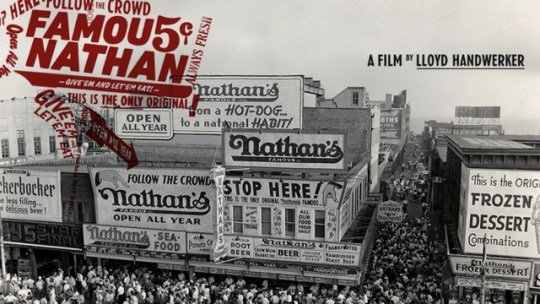

Happy Birthday to Lloyd Handwerker, who documented his grandfather's life and business in "Famous Nathan"! 2015 VIDEO INTERVIEW
LLOYD HANDWERKER podcast excerpt: "My grandfather was the first to integrate the counter, around 1949. Coney Island was pretty segregated at that time.”
https://mrmedia.com/2015/10/documentary-nathans-famous-of-coney-island-meant-hot-dogs-video-interview/
#lloyd handwerker#nathan handwerker#nathans#nathans famous#Nathan's Famous#nathan's hot dogs#hot dogs#coney island
1 note
·
View note
Photo
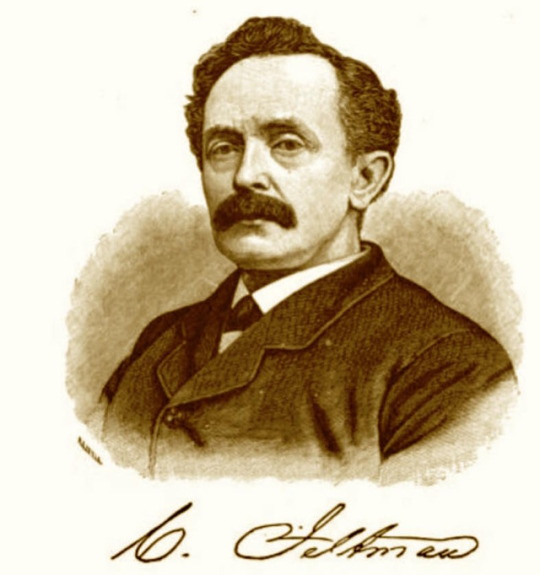
Working as a bartender, you often hear some whoppers coming from customers. Now, I can’t say the stories aren’t true but as one of my regulars likes to say “The bartender hears it all since the music faces away from the bar.” Its true, we do tend to hear it all, for good or bad. So this whopper was said the other day while I was bartending at Finns Corner (660 Washington Avenue, Corner of Bergen Street, Brooklyn NY.)
An older gentleman was talking to one of our regulars when he says “My great-grandfather invented the hot dog.” Now the regular looked up from his beer and said “Your great-grandfather was Nathan?” To which the gentleman answered “No, my great-grandfather fired Nathan. His name was Charles Feltman.” Obviously, he was looked at with skepticism and bullshit was called. the gentleman simply answered “Why would I like about being related to Charles Feltman.” I thought that was a reasonable answer.. I was asked what I thought about it and I just shrugged since I really don’t know much about the subject, but it piqued my curiosity. So who was Charles Feltman.
Charles Feltman (November 8, 1841 – September 20, 1910) was born in Germany and emigrated to the United States in 1856. He worked as a pie salesman via his pushcart at Coney Island. One of the items that he also sold was a sausage that Feltman had called a Frankfurter. Being a baker, Feltman came up with a bun that customers could hold the sausage in without having to use either utensils or plates. By 1871, Feltman had made enough money to rent a plot a land that would eventually become his empire. According to the Coney Island History Project website for Charles Feltman:
by the early 1900s covered a full city block and consisted of nine restaurants, a roller coaster, a carousel, a ballroom, an outdoor movie theater, a hotel, a beer garden, a bathhouse, a pavilion, a Tyrolean village, two enormous bars, and a maple garden. By the 1920s Feltman's Ocean Pavilion was serving five million customers a year and was billed as the world's largest restaurant.
So how does Nathan of Nathan’s fit into this story? Nathan Handwerker was an employee of Feltman who in 1916 left (or was fired as per the storyteller at the bar) and opened his own restaurant where he sold his sausages for five cents. Feltman sold his for ten cents. Now here is where the story gets convoluted.
Charles Feltman passed away on September 20, 1910 so he couldn’t have been the one to fire Nathan (as per the storyteller at the bar) but Feltman’s son and godson, both named Charles Feltman ran the business after the elder Feltman’s death in 1910. Maybe one of those two are the great-grandfather that the gentleman at the bar refers to, neither one of which are credited with inventing the hot dog. But what do I know, I’m only the bartender who hears it all because the music is facing away from the bar 😉 To finish off the Feltman story.
According to the Brooklyn Eagle Newspaper of April 29, 1946, the Feltman family sold the entire operation. The restaurant would stay in business at Coney Island until 1954. The Astroland amusement park would be built on the land of the former Feltman restaurant empire at Coney Island.
Recently the Feltman hot dog has made a comeback at Coney Island. According to the article Before Nathan’s there was Feltman’s: The history of the Coney Island hot dog by Dana Schultz from the 6sqft website dated July 3, 2018, Coney Island historian Michael Quinn brought back the Feltman name and similarly to Feltman himself, started selling the hot dogs via a pop-up and eventually raised enough funds to open up a Feltman’s on West 10th and Surf Avenue which is on the original Feltman’s location. We’ll see how this location does in today’s Coney Island.
I recommend that you check out the aforementioned article by Schultz for some views of what the Feltman restaurants looked like.
Anyhoo, let’s see what other whoppers of a story I come across in the next few shifts at the bar.
Peace ✌
@historysisco
#Charles Feltman#Coney Island#Brooklyn History#New York History#Culinary History#Hot Dog#Frankfurter#Nathan Handwerker#Nathan's#History#Hisotria#Histoire#HistorySisco
2 notes
·
View notes
Photo

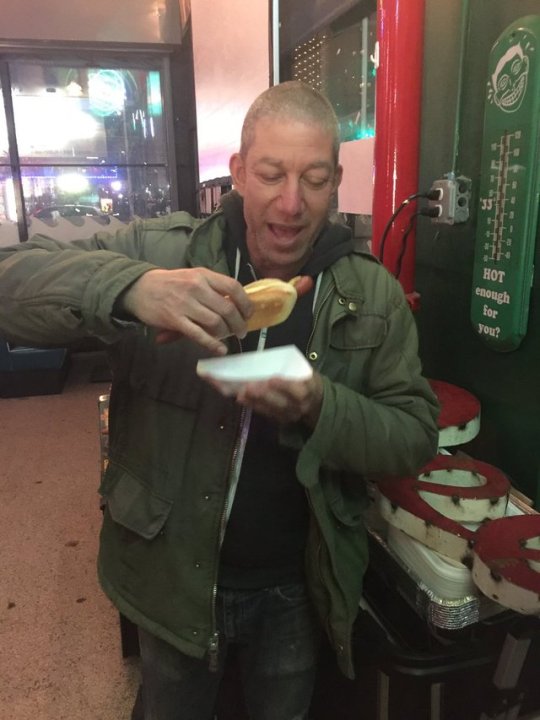
Now that Christmas has come and gone, summer is just around the corner, or so I keep telling myself every chilly morning that I walk into work. And nothing says summer like Famous Nathan’s Hot Dogs, right? Well to put you into that summer frame of mind, read Famous Nathan: A Family Saga of Coney Island, The American Dream, and the Search for the Perfect Hot Dog by Lloyd Handwerker with Gil Reavill, the very own grandson of (Famous) Nathan Handwerker.
3 notes
·
View notes
Text
In remembrance of Clara Bow, who passed away on this day, September 27th, 1965 🖤🖤
PART TWO
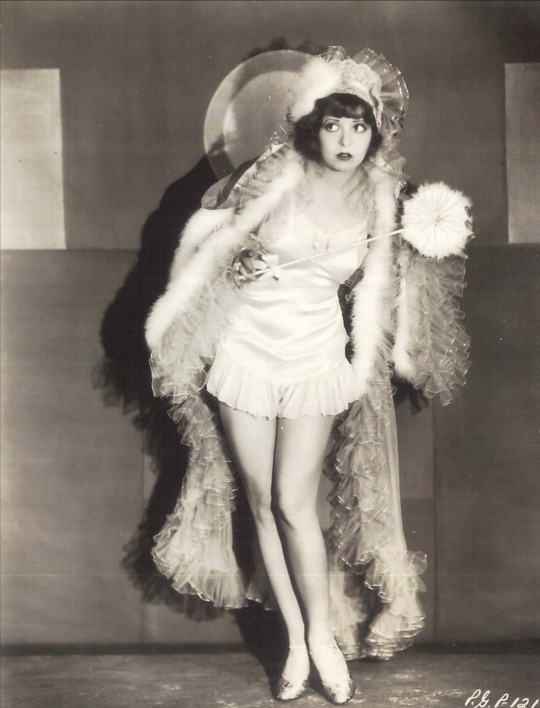
Clara Bow in Three Week Ends (1928)
DID YOU KNOW?...
-Clara Bow has a Star on the Walk of Fame
Her star was received on February 8th, 1960. At 1500 Vine Street.

-Before she was known as "The It Girl", she was known as "The Brooklyn Bonfire".
After a rough upbringing, Bow made her film debut in 1922 after winning a small role in a magazine contest. By the time “It” premiered in 1927, Bow was already a successful silent film actress, known to some as “the Brooklyn bonfire.”
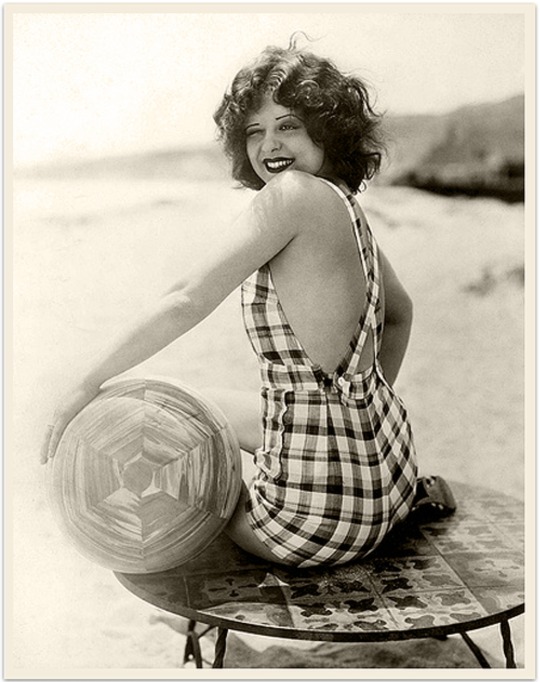
"The Brooklyn Bonfire"
-Clara has two sons, by Rex Bell: Rex Bell Jr. (b. 1934) and George Robert (b. 1938).
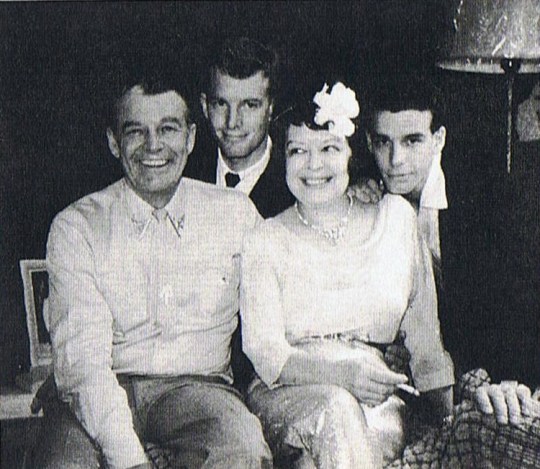
Clara Bow, aged 55, at a family reunion with her husband, George Beldam, and her two sons Tony Beldam and George Beldam, Jr. (1960)
-She lived in a seven-room bungalow at 512 N. Bedford Dr. in Beverly Hills at one point. She also lived in a Spanish-style house on Hollywood Blvd. between 1925 and 1927, and her last home was on Aneta Street in Culver City. She reportedly preferred playing poker with her cook, maid, and chauffeur over attending her movie premieres. Some of the properties in question are shown in Hollywood Mouth 2 (2014), whose director, Jordan Mohr lived near the Culver City property as a child and recognized the name of the street while reading David Stenn's biography of the actress.

Clara Bow's Malibu Beach House
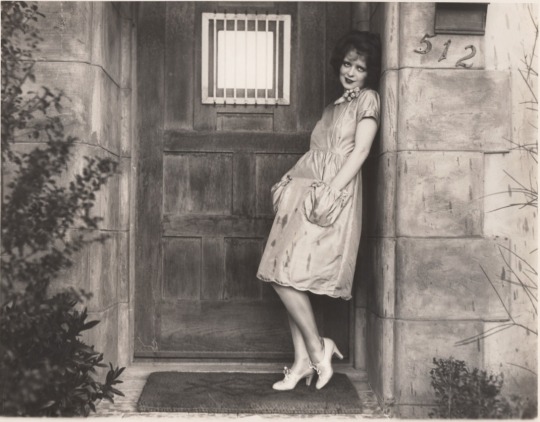
Clara Bow in the doorway of her home at 512 N. Bedford Dr.
-She worked at a hot dog stand on Coney Island as a teenager, run by a man named Nathan Handwerker, who later founded Nathan's Franks. However, contrary to legend, she was not discovered there.
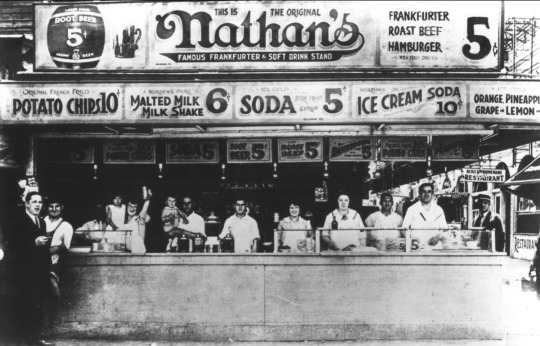
Nathan's counter (Courtesy of Nathan's)
-Clara Bow was pictured on one of ten 29¢ US commemorative postage stamps celebrating stars of the silent screen, issued 27 April 1994. Designed by caricaturist Al Hirschfeld, this set of stamps also honored Rudolph Valentino, Charles Chaplin, Lon Chaney, John Gilbert, Zasu Pitts, Harold Lloyd, Theda Bara, Buster Keaton, and the Keystone Kops.

-She was a WAMPAS Baby Star of 1924.
The WAMPAS Baby Stars was a promotional campaign sponsored by the United States Western Association of Motion Picture Advertisers, which honored 13 (15 in 1932) young actresses each year whom they believed to be on the threshold of movie stardom. The campaign ran from 1922 to 1934, except for 1930 and 1933.

Clara Bow pictured in the front, far left.
-After her death there were rumors that she had faked her death, and some had reported seeing her visiting her own grave, at Forest Lawn, Glendale (Freedom Mausoleum, Sanctuary of Heritage), where she is interred next to George Burns and Gracie Allen.

Clara Bow's grave.
🖤🖤🖤
Sources: IMDb.com
wikipedia.com
#clara bow#clara bow history#the life of clara bow#vintagephotos#vintagewomen#vintagefashion#vintage hollywood#vintage films#vintage cinema#vintage Hollywood#vintage celebrity photos#1920s hollywood#1920sfashion#1920s silent film stars#1930smovies#1930s actresses#old hollywood#old hollywood stars#old movies#old films#1930s cinema#1930s celebrity photos#1930s celebrity history#classicfilms#classic Hollywood#1920s celebrity photos#Hollywood glamour#1920s cinema#in rememberance of clara bow#1920s movie history
20 notes
·
View notes
Text
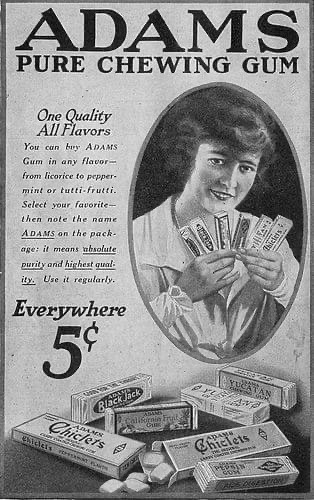
25 things that were invented in NYC.
1. Toilet paper: In 1857, Joseph C. Gayetty began selling packs of “medicated paper for the water closet” out of his wholesale shop at 41 Ann St. The paper was made from pure Manila hemp and treated with aloe. Best (or worst)
of all, each sheet was watermarked with his name.
2. Chicken ’n’ waffles: After its 1938 opening, Wells Supper Club in Harlem was the last stop for jazz greats like Sammy Davis Jr., Gladys Knight and Nat King Cole. Catering to its night-owl talent, Wells created the perfect dish for acts who’d missed dinner but couldn’t wait till breakfast: leftover fried chicken on a sweet waffle.
3. Chewing gum, a New York invention, was first manufactured in 1870 by Thomas Adams in a warehouse on Front Street. Called ''Adams New York Gum No. 1,'' it was made from chicle, a form of sapodilla tree sap chewed in the Yucatan and Guatemala.
4. The Waldorf Salad: The Waldorf Astoria boasts two inventions on this list, the first of which is its classic salad, which combines lettuce, apple, celery and walnuts. It was first served in 1896.
5. Teddy Bears: In 1902, President Theodore Roosevelt refused to shoot an injured black bear while on a hunt. Inspired by the story, Morris and Rose Michtom, candy-store owners from Brooklyn, sewed a plush bear and displayed it, calling it “teddy’s bear.” The toy was so popular, they gave up candy and opened a factory to make the cuddly critters.
6. The Tom Collins: In 1874, a hilarious joke swept through the city: A prankster would tell a friend, “I was at [insert local saloon], where Tom Collins was saying [insert insult] about you!” The offended party would rush off to defend his honor, but there was no Tom Collins. (Cool joke, bro.) Inspired by the prank, New York mixologist Jerry Thomas created the recipe in 1876.
7. Coal-fired pizza: Pizza was cooked with wood fires until Gennaro Lombardi introduced the tasty magic of coal. Legend has it he served the first coal-fired pie in 1905. Cooking pizza that way is technically illegal now, but the ovens of a few select haunts around the city were grandfathered in, including Lombardi’s, Totono’s and Patsy’s.
8. Scrabble: Out-of work architect and anagram lover Alfred Mosher Butts conceived this wordy board game in 1931 while living in Jackson Heights, Queens. The street sign on Butts’s corner in Queens now reads “35t1H4 a1V4e1n1u1e1” after the famed letter-scoring system.
9. Spaghetti primavera: When this faux Italian dish (fresh vegetables and Parmesan cream sauce on pasta) was served at Le Cirque in 1977, it was, according to The New York Times, “the most talked-about dish in Manhattan,” much to the chagrin of head chef Jean Vergnes. The classically trained Frenchie was so offended, his cooks had to prep the dish in a hallway—yet later he claimed its invention.
10. The remote control: Nikola Tesla conceived of a radio-controlled boat way back in 1898. The idea was so novel that nobody believed such technology could exist.
11. Sweet’n Low: Fort Greene entrepreneur Benjamin Eisenstadt teamed up with his chemist son, who found a way to create saccharin in powdered form (before it could only be a liquid or a pill). He named his pink-label brand after a Tennyson poem.
12. Eggs Benedict: Stockbroker and bon vivant Lemuel Benedict woke up one morning in 1894 with a raging hangover and booked it
to the Waldorf Astoria hotel, where he ordered a poached egg, crispy bacon, toast and hollandaise sauce. Legendary maître d’hôtel Oscar Tschirky was such a fan of the creation, he added it to the hotel’s menu.
13. The Bloody Mary:
Fernand “Pete” Petiot imported his tomato-juice-and-vodka concoction from Paris to the St. Regis hotel’s King Cole Bar. Catering to the spicier local tastes, Petiot added Worcestershire sauce, lemon and
a dash of cayenne and black pepper.
14. Credit Cards: You have John Biggins of the Flatbush National Bank to thank for those interest charges and late fees: In 1946, he created the charge-it program, which issued customers bank credit cards for use at local Brooklyn merchants. The shop owners would then deposit the sales slips at the bank, who would then bill cardholders.
15. Baked Alaska: In 1876, the pioneering pastry chefs
of lower-Manhattan restaurant Delmonico’s conceived of piping-hot sponge cake topped with crispy meringue and filled with ice cream, naming this miracle
of food science in honor of the country’s newest territory.
16. General Tso’s Chicken: While exiled in Taiwan after the Chinese Civil War, chef Peng Chang-Kuei created a spicy-and-sour chicken dish as an homage to a famous Hunanese general. When he jumped ship to New York in the 1970s and opened Peng’s, the dish became a huge hit— after he added sugar to the recipe.
17. Frozen Hot Chocolate:
Stephen Bruce, the cofounder
of iconic East-Side restaurant Serendipity 3, kept the recipe of this decadent dessert a secret for 40 years. Bruce recently revealed that the famous frozen treat is 14 kinds of cocoa mixed with crushed ice and topped with whipped cream. (The types of cocoa still remain a mystery.)
18. Air conditioning: In 1902, Willis Carrier created his “apparatus for treating air” to keep the humidity from warping the paper at a printing plant on Grand St in Bushwick. Saving workers from the sweltering summer heat was just a fortunate side effect.
19. The Reuben Sandwich: Alright, this one’s contested, but many say Arnold Reuben, owner of Reuben’s Delicatessen, invented the meat-and-krout combo in 1914. Legend has it, the sandwich was created for a famished actress, who came in after a show, using the few ingredients left on the deli shelves.
20. Mr. Potato Head: When New Yorker and toy designer George Lerner first created plastic facial features to stick on real vegetables, toy companies worried that food wasting wouldn’t fly with a postwar public. But in 1952, Hasbro bought Lerner’s
idea and made the first TV ad ever for children’s playthings, selling a million units that year.
21. Hot dogs: Coney Island baker Charles Feltman had the genius idea to serve hot sausages in a
bun for a dime each. His frank fortune bought him a beachside empire of hotels and beer gardens, until former employee Nathan Handwerker opened Nathan’s Famous and sold his dogs for only a nickel.
22. ATMs: the first money-dispensing device was conceived in 1939 by Luther George Simjian, who convinced the City Bank of New York (today’s Citibank) to test his contraption for six months. The bank declined to use the machine after that, because “the only people using the machines were a small number of prostitutes and gamblers.”
23. Cronuts: Dominique Ansel labored for months to perfect his doughnut-fried, fluffy hybrid from heaven. The pastry, which debuted in May 2013, still inspires down-the- block lines each morning.
24. Children's Museums: The Brooklyn Children's Museum, located in Crown Heights, opened in 1899 and was the country’s first museum dedicated to the education of kids. It was also the first to introduce a “hands-on” policy for its exhibits.
25. Hip-hop. Enough said.
3 notes
·
View notes
Photo





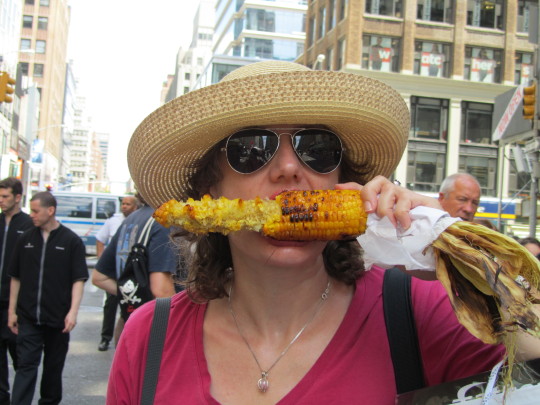




Eat Outside Day
It's the last day of August, and the end of summer is only three weeks away. That sounds like a good enough reason to have a day dedicated to eating outside. Eating outside, or eating alfresco, dates back to the middle ages, when hunters ate outside before beginning their excursions. Picnics, which have historically been eaten in pastoral settings, first became popular in the 18th century. The word "picnic" was first used in English in 1748, and picnicking in the parks of France became popular after the revolution of 1789. During the first major battle of the Civil War, the First Battle of Bull Run, picnickers who had come to watch the battle had to run back to Washington D.C., as the expected Union victory did not come to be. Picnicking gained in popularity in the 20th century, when public transportation and automobiles allowed people to more easily escape to bucolic surroundings. Barbecues, which often consist of cooking on grills in backyards, were another pastime that gained popularity in the 20th century.
Pleasure gardens were another venue where eating outside took place. A form of these public gardens existed in Ancient Rome, and many were opened in England in the 18th and 19th century. They also appeared in major cities in the United States in the 18th century, and had various attractions, including food. Usually light snacks were eaten, especially ice cream. A similar, but smaller type of outdoor venue for eating, was the tea garden. Following the Civil War, beer gardens became popular. They were based off German beer gardens, and flourished on the outskirts of town, until the prohibition era.
Around the turn of the 20th century, the first outdoor cafes opened in the United States. They were modeled after Parisian cafés, which had been in existence since the 17th century. Some rooftop restaurants also opened in larger cities in the United States around the same time. Another important popular outdoor attraction around the turn of the 20th century that featured food was Coney Island. Charles Feltman is credited with inventing the hot dog there, and he built a restaurant with outside seating, taking inspiration from pleasure gardens and the beer gardens of his homeland. He eventually built an outdoor dining area that was lined with maple trees and staffed with singing waiters. By the 1920's, the subway line reached Coney Island, and Feltman's business boomed. One of Feltman's workers, Nathan Handwerker, opened Nathan's Hot Dogs in 1916, and it still is in business at Coney Island today. And guess, what? They have outside seating!
How to Observe
Celebrate the day by eating outside! Have a picnic or a barbecue with your family or friends! Go to a restaurant that has outdoor seating. Maybe you even live close to one of the best outdoor dining restaurants in the country. If you find yourself in New York City, go to Nathan's!
Source
#Likörfabrik#Rostock#Germany#Wyoming#USA#original photography#travel#summer vacation#Eat Outside Day#EatOutsideDay#31 August#Domaine Carneros#Napa#Damariscotta Shell Midden Historic District#Boston#Cape Neddick Point#Chicago#Palo Duro Canyon State Park#New York City#Miami Beach#restaurant#rest area#landscape#cityscape
1 note
·
View note
Text
“Underwater America with Peter Potamus” (episode 23: Eastern Long Island, NY)

Once again, it’s time for another episode of that weekly documentary series demonstrating the friendship-generating possibilities of SCUBA by way of Peter Potamus and his band of divers in the summer of 1970 for broadcast in first-run syndication in the 1970-71 season. As will be recalled from last time, there was an uneventful sort of dive off Ocean City, Maryland which became memorable for an attempt to “ride” a white marlin swimming off shore--and now, as we open the episode ...
PETER POTAMUS, narrating over an aerial view of Ocean City, Maryland onward to the Delaware Shore, culminating in the Cape May-Lewes Ferry and the beginnings of the Garden State Parkway: It all came about thanks to a late telegram sent to us by Top Cat--”TC” to close intimates and acquaintenances--as we were packing up and getting ready to leave Ocean City, even if the diving turned out being slightly uneventful ... and we were to meet him and his clowder at the corner of Stilwell and Surf on Coney Island in Brooklyn posthaste. I was able to send back a wire in response, stating we were on our way ... and considering that the route up the Delaware Coast and its resorts was bound to be congested, a rather early, pre-sunrise start was advised. Not to mention catching the US 9 ferry between Lewes and Cape May and, from Cape May north, the Garden State Parkway. As far as Exit 137, as in Westfield Avenue in Elizabeth ... then Elmora Avenue to the Goethals Bridge into Staten Island, the Verranzano-Narrows such into Brooklyn ... and once in Brooklyn, crazy little city that it is, 86th Street in Bensonhurst to Stilwell Avenue towards Coney Island... try to find some parking ...
[Footage of the legendary Nathan’s Famous, including such epitomising its famous “Follow The Crowd” slogan along as much Surf Avenue as Stilwell; the heart of Coney Island, you know....]
And THIS is where TC directed us to?!!
TOP CAT, outside an opening along Stilwell trying to dodge the crowd seeking the famous franks as are Nathan’s claim to fame: You were looking for Snagglepuss, perhaps?
PETER POTAMUS: So you’re Top Cat, as sent me the wire down Ocean City way!
TOP CAT: The same, the same!
BENNY THE BALL, Nehru jacket and all: I’m Benny, TC’s right-hand man, you might say! Small in size, but big in heart! (Top Cat chuckles at the observation)
CHOO-CHOO, with the inevitable shyness: I’m Choo-Choo--otherwise known as “Chooch.” Hopeless romantic almost always, you have to say.
BRAIN, not quite so: The name’s Brain. But not quite bright in the head, you might say.
FANCY-FANCY, with inevitable bluster concealed by a fraying scarf: Fancy-Fancy is what the gals call me as much as TC! But too often, things get in the way to finally pull off a serious date with the gals!
SPOOK, ever the beatnik-at-heart: And I’m, like, Spook, somewhat of a moody poet and observer more than anything ...
PETER POTAMUS: And, just out of curiosity, what had you calling us over here at Nathan’s Famous?
TOP CAT, with glib galore: I’ll gladly discuss over some Nathan’s franks and fresh-squeezed lemonade! Come on, troopers, let’s get the orders out of the way and be seated ...
PETER POTAMUS, narrating over the scene in the main dining area at Nathan’s once all are seated (with kitschy stock music to match): The amusing thing about Nathan’s hot dogs is that they taste so ... unlike any other. In fact, soon after opening in 1916, Nathan Handwerker himself responded to some wild rumours that less-than-wholesome ingredients in his hot dogs explained the 5-cent price charged by inviting the doctors and nurses at the nearby Coney Island Hospital to try his franks free of charge to disprove the charge--pronouncing such to be pure and wholesome, and of the highest quality besides! At any rate, after introducing ourselves to TC and crew over Nathan’s hot dogs--many in TC’s camp somehow being surprised by who we are and what attracted each of us to diving--
TOP CAT, laying it on the line: We’d like the opportunity to join you on one of your dives sometime!
PETER POTAMUS, caught off guard and trying to avoid a spit gag: You had much diving experience yourselves?
TOP CAT: We certainly have! And where did you have in mind?
PETER POTAMUS: A couple of interesting sheltered spots out Long Island way--Peconic Bay and Gardiner’s Bay, out towards Montauk and Riverhead!
MILDEW WOLF, with some snark on the side: I have to wonder myself why Peconic Bay wasn’t simply called Picnic Bay to begin with!
PETER POTAMUS, explaining: That’s Mildew Wolf, one of our divers ... and he has something of a wicked sense of humour like you wouldn’t believe!
CHOO-CHOO: Which I think we can accept as a given with these, right, TC?
TOP CAT: Naturally, Chooch; after all, it sometimes requires some serious humour to get us out of a jam! Oh yes, Peter; we’ve got some rather decent SCUBA gear for the journey you have in mind ...
[Fading out as the whole begins to emerge by way of a drive down the Southern State Parkway, segueing into the Sunrise Highway, aka New York 27, eventually Suffolk County 51, into Riverhead and Peconic Bay]
PETER POTAMUS, narrating over the inevitably cheesy music: What’s interesting about East Long Island as a dive spot is that the two bays as make up its eastern extremity, Peconic Bay and Gardiner’s Bay, happen to be quite sheltered and not bound to be as rough as the Atlantic Ocean to the south of Long Island. Some dive shop contacts we had in Riverhead mentioned that such tranquility may explain as much some interesting clarity of the waters as much as the sea life to be had: Lobsters, oysters, clams, weakfish, sea bass, shad, porgy--quite a few North Atlantic sea fish to be encountered.
And we were able to find a modest little beach to the south of Riverhead as allowed us to walk in with our fins and start the dive from there--but oh yes, in diving, safety is paramount!
We can essentially “listen in” on the safety briefing and gear check Peter is delivering in the shallows, even allowing for the welcome of Top Cat and company, fading in on the drop-in dive from the shallows into Peconic Bay as captured oh so masterfully by Squiddly Diddly, ever the master of underwater photography. And not even the ever-pessimistic Brain from TC’s clowder can’t help but be stunned by such rock reefs and the sea life ensuing, with Lippy the Lion and Hardy Har-Har joining in. Two of the more, shall we say, intrepid such of Peter’s company, Wally Gator and Breezly Bruin, bring along their harpoon spearguns and add some colour by spearing a few of the legendary Peconic Bay weakfish which, served planked, are something of a Northeastern culinary legend.
WALLY GATOR, narrating over the spearfishing segment: Who couldn’t resist some of that legendary Peconic Bay weakfish for supper on a cedar wood plank?
MILDEW WOLF, adding his bit of narrative snark: And you wonder why they call it weakfish in the first place ...
Meanwhile, Hokey Wolf tries his hand at catching some Peconic Bay lobster, only to suffer Hilarious Consequences when he catches the lobster the wrong way beforehand....
PETER POTAMUS, narrating things post-dive: At any rate, we were able to find a decent little tavern as fixed up the weakfish in the classic planked style ... add some hash brown potatoes, some cole slaw--and plenty of memories. In particular--
FANCY-FANCY, with some exuberance: The way that tavern was able to plank those weakfish for supper, you just couldn’t BELIEVE how such an ordinary sea fish could turn out on Long Island!
PETER POTAMUS: Next up ... Gardiner’s Bay.
Following the usual break and all that ...
Around Peconic Bay and Gardiner’s Bay on Eastern Long Island, there’s two rather narrow forks on either side of Long Island: The “South Fork” may have the Hamptons and Montauk, popular weekend resort of New York’s moneyed set in the summer ... and on its North Fork, the somewhat barren tidal flats broken up by villages such as Greenport and Orient. And just past Orient is Orient Point State Park, seeing quite an afternoon for both our parties and itself popular among the boating and diving set. Again, as with Peconic Bay, Gardiner’s Bay off Orient Point is rather easy to get into its waters on foot from the shore, eventually sloping down to a maxima of around 40 feet.
More underwater footage from the indomintable Squiddly Diddly from the waters off Orient Point, cheesy stock background music and all ...
And there was a time when Orient Point had a reputation for the oysters of its waters ... which the ever-hilarious Hokey Wolf tried to scoop up in bag, only to realise [as is inevitably captured] that he chose a paper bag to collect them, which can break up in the tidal currents attracting as much the same fish found back in Peconic Bay. Next time, Hokey, consider a mesh net if you plan on picking up oysters or clams....
And finally ...
With much fondness tinctured with hesitation, we parted ways with Top Cat at a seafood grotto in Port Jefferson, not far from where the ferry docks for Bridgeport, Connecticut are situated--and what an interesting discovery made by Magilla Gorilla, who may be a little crazy otherwise, thereby saving us considerable driving through New York and allowing for a direct drive towards our next destination ... that jewel of New Hampshire known as Lake Winnipesaukee. Which is where we’ll all dive into next week at this time....
@warnerarchive @hanna-barbera-land @warnerbrosentertainment @hanna-barberians @hanna-barbera-blog @joey-gatorman
#fanfic friday#hanna barbera#peter potamus#scuba party#scuba#top cat#nathans famous#diving long island#peconic bay#planked peconic bay weakfish#spearfishing#orient point#gardiner's bay#bridgeport ferry#hannabarberaforever
2 notes
·
View notes